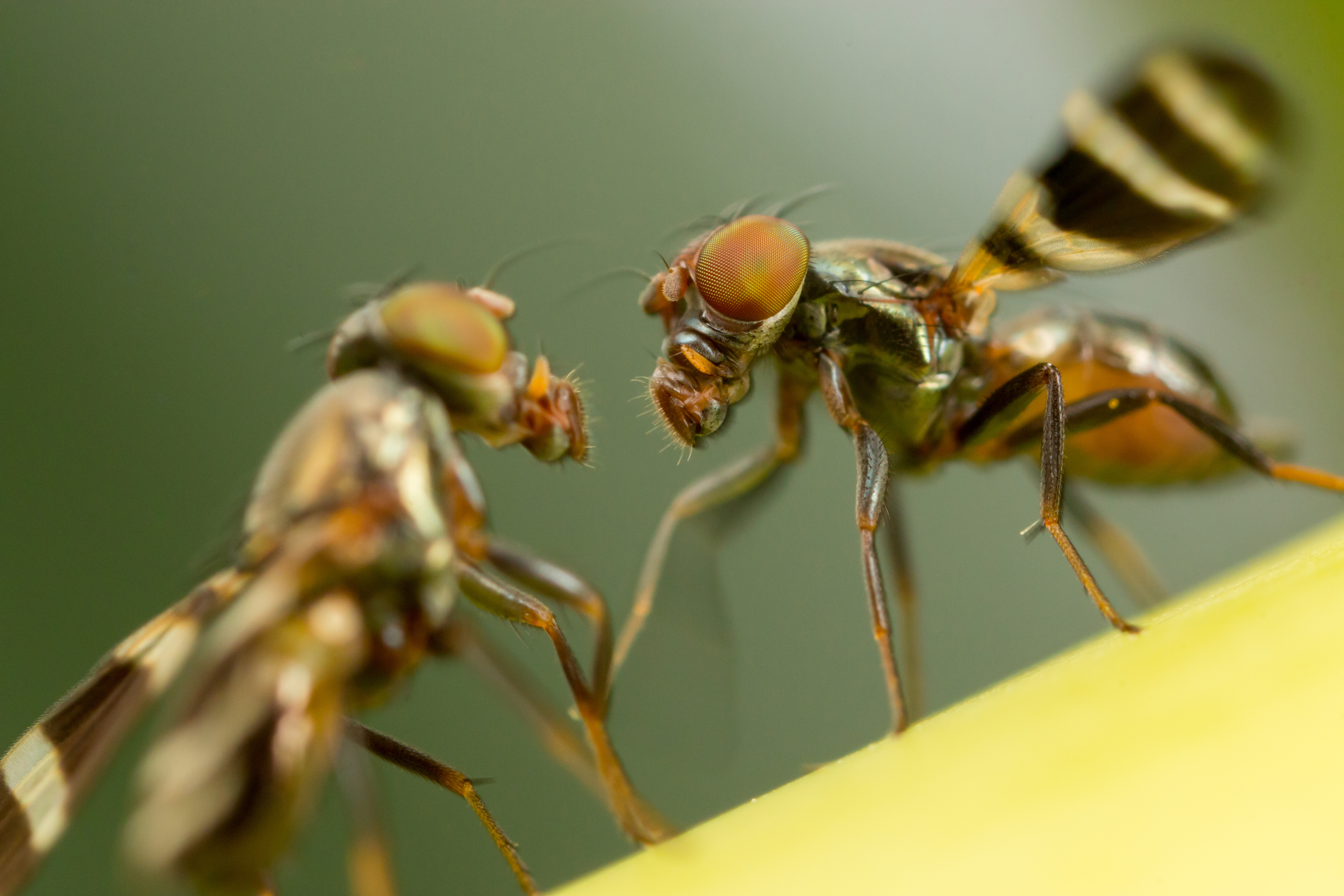Scientists Edited Fruit Fly Genes to Give Them Butterflies’ Toxic Abilities

Credit to Author: Maddie Bender| Date: Wed, 02 Oct 2019 17:21:51 +0000
Scientists have genetically engineered fruit flies that are resistant to the toxins in milkweed, the preferred snack for monarch butterflies. Not only that, the flies retain some of the poisonous compounds in the milkweed, turning them into toxic treats that have the potential to make a predator puke.
These freaky flies aren’t just some mad scientist’s creation. As described in a new study published on Wednesday in the journal Nature, they may actually help to explain how the iconic, conspicuously badass, rule-breaking monarch butterfly came to be.
Monarch butterflies are known for their bright coloration and annual winter mass migrations of up to 3,000 miles. With millions of butterflies making the journey every year, they would be orange-striped sitting ducks for predators if they weren’t highly toxic to most birds and mammals. When ingested, chemicals from the milkweed butterflies feed on gives predators an experience they’ll remember. A famous photo by monarch butterfly biologist Lincoln Brower depicts a blue jay vomiting after naively ingesting a monarch.
Toxic compounds in milkweed called cardiac glycosides are to blame for the upchuck, but scientists didn’t know how the monarch gained the ability to ingest the compounds without getting sick themselves. A team led by scientists at UC Berkeley now holds the answer in fruit flies mutated to handle milkweed like butterflies do.
“It’s extraordinary to me that this little system revealed so much about adaptation,” said Noah Whiteman, a co-author of the study and an associate professor of integrative biology at Berkeley.
Whiteman’s lab used CRISPR-Cas9 gene-editing to copy and paste six variations of a monarch butterfly gene into fruit flies. The scientists looked at the effect of three mutations—specific changes in the content of a gene—on the flies’ ability to survive after ingesting ouabain, a cardiac glycoside traditionally used in eastern Africa to tip poison-tipped arrows. To their surprise, the most successful mutant fruit flies were 1,000 times less sensitive than normal flies to the toxin.
At the prompting of Marianna Karageorgi, a postdoctoral researcher in Whiteman’s lab, the scientists fed the mutant flies a mixture with milkweed leaf powder, which contains other toxins besides cardiac glycosides. They survived that, too.
A closer look at the flies showed that not only did they store a small amount of cardiac glycosides in their system after eating milkweed—when they underwent metamorphosis, they retained some of the toxins in their system. Monarchs do the same thing, but go a step further by concentrating the toxins to an even greater degree, Whiteman said. These results suggest that the butterflies’ ability to digest milkweed paved the way for them to be able to make blue birds barf.
To easily pick out the mutant flies, the scientists engineered them to have white eyes, which inadvertently caused the flies to have poor vision. The ones fed with powdered milkweed leaf turned a dark black color, a characteristic that Whiteman said betrayed their unhappiness with the situation. The researchers say that the mutated flies also shook in apparent neurological seizures, possibly an unintended side effect of the mutated genes or the CRISPR technique itself.
According to the study, the gene-editing marks the first time that CRISPR has been used to recreate an adaptive progression in a multi-celled organism.
“Although mutational paths to adaptive peaks have been identified in microorganisms, this is, to our knowledge, the first in vivo validation of a multi-step adaptive walk in a multicellular organism, and illustrates how complex organismal traits can evolve by following simple rules,” reads the study.
Whiteman said that he plans to celebrate the publication by sharing a monarch butterfly cake with the rest of the integrative biology department at Berkeley. In a department-wide email that featured an image of a fruit fly wearing a crown, Whiteman said that he promised that there wouldn’t be any toxins in the cake.
This article originally appeared on VICE US.